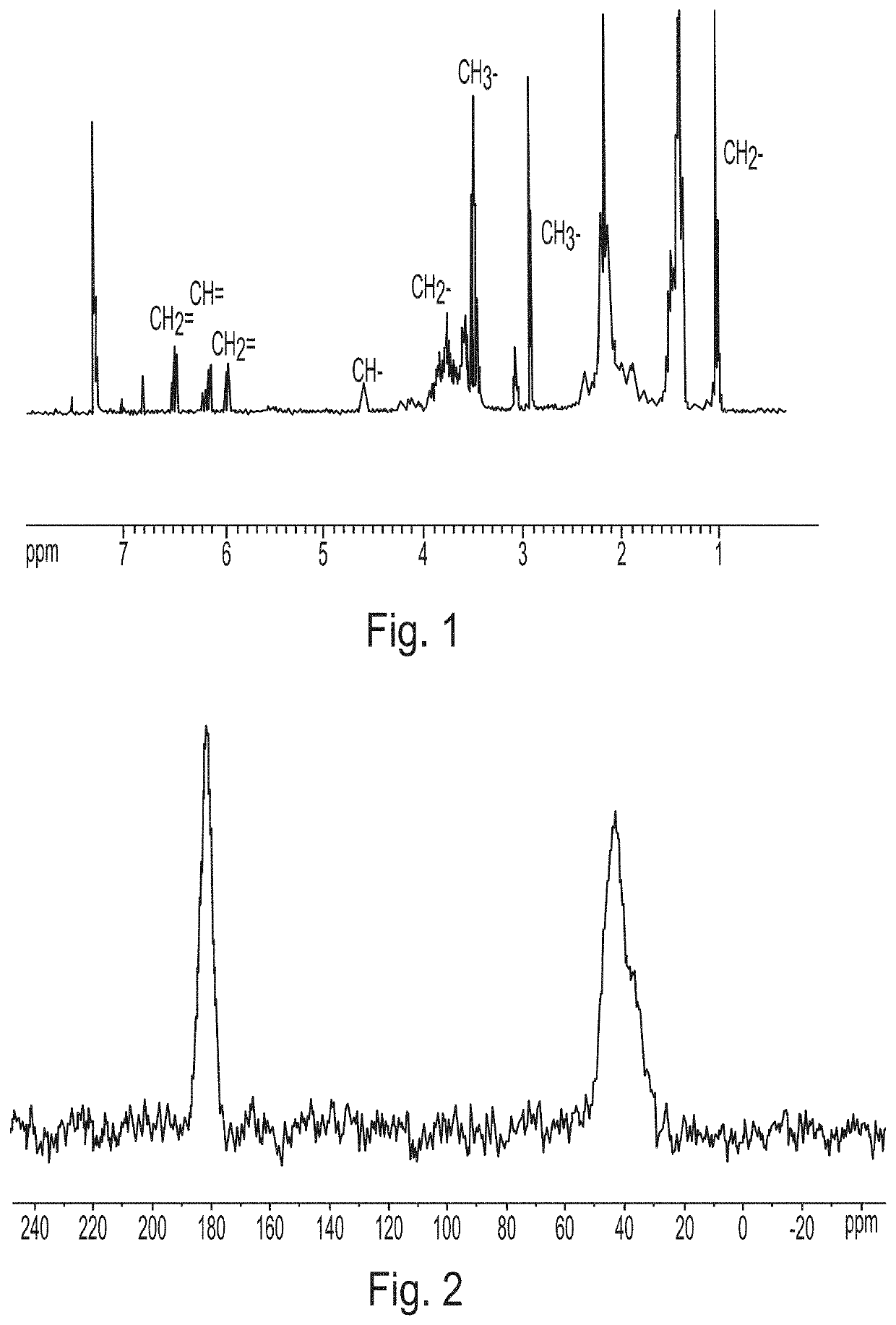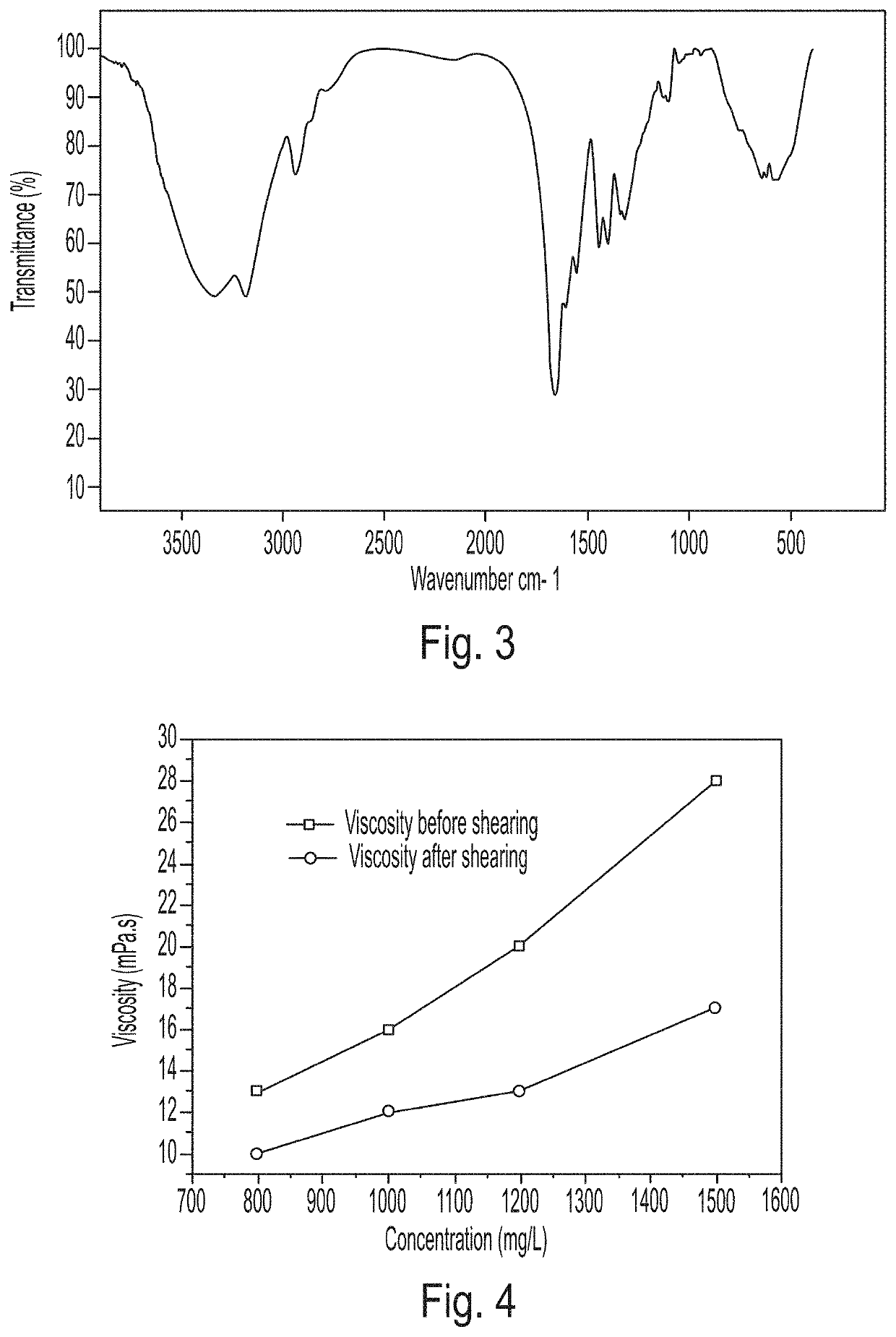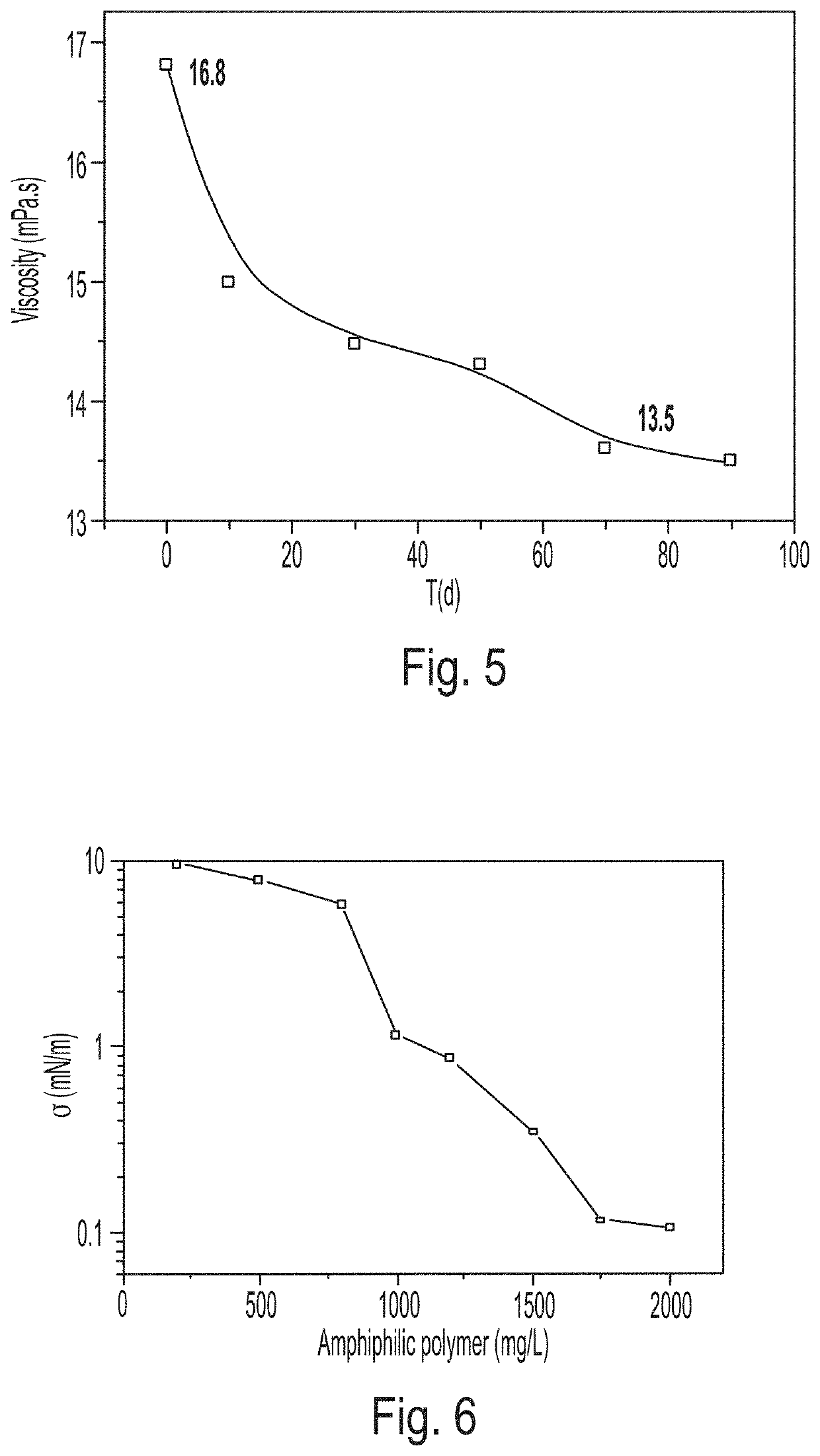Heavy oil activator and preparation method and use thereof
a technology of heavy oil and activator, which is applied in the direction of drilling composition, chemistry apparatus and processes, and well accessories, etc., can solve the problems of complex viscosity reduction by heating (thermal production), heavy oil is much more difficult to exploit than conventional crude oil, and the current heavy oil production techniques all have certain limitations. , to achieve the effect of increasing oil production
- Summary
- Abstract
- Description
- Claims
- Application Information
AI Technical Summary
Benefits of technology
Problems solved by technology
Method used
Image
Examples
example 1
[0052]1. Preparation of an Activating Polymer
[0053]The activating polymer represented by Formula (1) was specifically prepared by the following method.
[0054]First, functional monomer I was prepared by the following steps.
[0055]14.6 g (0.1 mol) of 1,3-bis(N,N-dimethyl)-2-propanol and 42.5 g (0.22 mol) of bromooctane in ethanol solution were placed in a 250-ml three-necked flask, stirred magnetically, and condensed under reflux at 65-70° C. for a reaction for 24 hours. The resultant solution was subjected to vacuum rotary evaporation at 50° C. to remove the solvent, followed by an addition of an appropriate amount of acetone, heated and dissolved. After the resultant solution was cooled, a white solid was precipitated with diethyl ether to obtain product I. The product was recrystallized three times with acetone-diethyl ether to give a white solid. The yield was greater than 95%. 26.6 g (0.05 mol) of product I in anhydrous chloroform solution was poured into a 250-ml three-necked flas...
PUM
| Property | Measurement | Unit |
|---|---|---|
| temperature | aaaaa | aaaaa |
| temperature | aaaaa | aaaaa |
| mass volume concentration | aaaaa | aaaaa |
Abstract
Description
Claims
Application Information
 Login to View More
Login to View More - R&D
- Intellectual Property
- Life Sciences
- Materials
- Tech Scout
- Unparalleled Data Quality
- Higher Quality Content
- 60% Fewer Hallucinations
Browse by: Latest US Patents, China's latest patents, Technical Efficacy Thesaurus, Application Domain, Technology Topic, Popular Technical Reports.
© 2025 PatSnap. All rights reserved.Legal|Privacy policy|Modern Slavery Act Transparency Statement|Sitemap|About US| Contact US: help@patsnap.com



